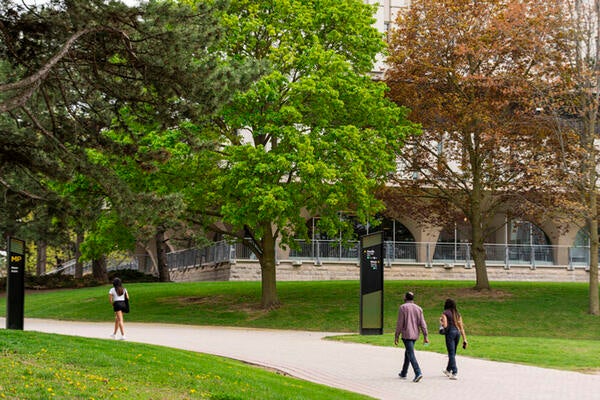
How to enhance your mental health while living with stress (yup — it really is possible)
Ella Sofia (BA ’15, MA ’18) shares three steps you can take to help yourself flourish.

Ella Sofia (BA ’15, MA ’18) shares three steps you can take to help yourself flourish.
By Ella Sofia (BA ’15, MA ’18) AlumnusTight deadlines.
Required readings.
Food you can’t afford.
Yikes. But I bet you don’t have to imagine a world like that. Because for us alumni, that world is called university.
I lived in that world for eight long years. And in hindsight, it’s shocking to think that while living in that world, I preferred caffeine to sleep and high grades to sanity.
…But then I realized university does not have to be that way.
A new world
I entered the university world back in September 2011. I spent four years pursuing a Bachelor of Arts degree and another three years pursuing a Master of Arts degree in the co-op stream. I had my plate full, but my resume said it all – I prayed that by “doing it all” I’d have a higher chance of being successful after graduation.
At first, I did a fine job at managing my stress levels in that university world. But around year four, the stress caught up to me and I began plummeting toward rock bottom…
It wasn’t until the final term of my MA degree, after taking a necessary health leave from both my degree and my full-time job, that I finally began to figure out how to enhance my mental health while pursuing my goals. As I completed a major research paper on biopolitical security and risk management in airports, I realized that the airport security system I was writing about wasn’t so different from the security of my mental health.
Simply put, biopolitical security as coined by Michel Foucault means keeping a population safe while allowing the natural circulation of the environment to be sustained so that the population can grow and flourish. So, if biopolitical security could work for airports, maybe it could work for health too? That said, I broke down biopolitical security into a three-step formula to both secure and enhance mental health.

Step 1: Bare necessities
Identify the bare necessities you need to survive in your natural environment – that is, your environment before your stress began. These necessities (like food, water, and a place to call home) will likely be similar for everyone.
Step 2: Personalized necessities
Identify necessities specific to your life which allow you to flourish in your natural environment. Maybe you enjoy playing soccer, eating chicken fajitas, and having time to decompress before going to sleep. These necessities are personalized to your lifestyle as well as your likes and dislikes.
Step 3: Securitization
Now that you’ve determined the necessities in your natural environment, determine how you can bring each of your necessities into your current situation.
Start with the bare necessities. Need food? Save time and money by subscribing to a meal delivery service. Need a home? Find a place that you truly enjoy, not just a cheap place with a roommate who never does their dishes.
Then move to the personalized necessities. Want chicken fajitas? Buy chicken in bulk, freeze it in portions, and make fajitas as needed. Enjoy soccer? Join intramurals or find a pick-up league. Need to decompress but can’t stop thinking about school? Listen to binaural beats while lying in bed. New to binaural beats? Learn more about them in my post on active rest for mental health.

Your ultimate goal is to sustain the circulation of your natural environment while living in a stressful situation. This way you’ll have everything you need to survive, and also to flourish.
Are you surviving or flourishing?
If you or someone you know is experiencing stress, consider following these three steps to enhance mental health. Oh! And don’t forget to ask… WWFD (what would Foucault do)?
Ella Andrisevich (BA ’15, MA ’18) is a habit coach, YouTuber, and blogger at www.retrainyourbrain.ca. She is an authority on habits, mental well-being, resilience, risk management, and personal growth.

Read more
Shop Canadian this holiday season with festive porch plants, fashion-forward apparel, craft spirits and more from Waterloo entrepreneurs

Read more
For more than four decades, Waterloo professor Larry Smith has helped build the University's reputation for innovation and entrepreneurial excellence

Read more
Alumni volunteers play a vital role in Waterloo’s admissions process, helping shape the newest incoming class of university talent
The University of Waterloo acknowledges that much of our work takes place on the traditional territory of the Neutral, Anishinaabeg, and Haudenosaunee peoples. Our main campus is situated on the Haldimand Tract, the land granted to the Six Nations that includes six miles on each side of the Grand River. Our active work toward reconciliation takes place across our campuses through research, learning, teaching, and community building, and is co-ordinated within the Office of Indigenous Relations.